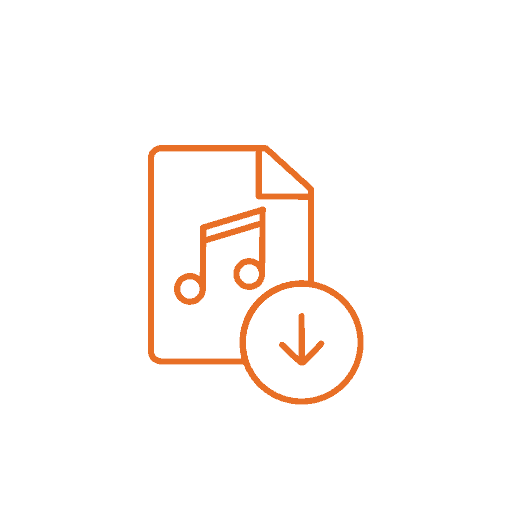Symptom Management: Bowel Dysfunction
October 5, 2020
GG deFiebre of SRNA is joined by Dr. Margaret Jones for an ABCs of NMOSD podcast on “Symptom Management: Bowel Dysfunction.” The podcast begins with Dr. Jones giving a brief overview of the possible effects of NMOSD on bowel function and the different issues someone with NMOSD might experience. She then discusses treatment options and how a treatment plan is decided. Dr. Jones talks about digistim, constipation, and the effects of aging on bowel function.
Transcript
Intro: [00:00:00] ABCs of NMOSD is a 10-part education podcast series to share knowledge about neuromyelitis optica spectrum disorder, or NMOSD, a rare relapsing autoimmune disorder that preferentially causes inflammation in the optic nerves and spinal cord. ABCs of NMOSD Podcast Series is hosted by SRNA, the Siegel Rare Neuroimmune Association, and in collaboration with The Sumaira Foundation for NMO, the Connor B. Judge Foundation and Guthy Jackson Charitable Foundation. This education series is made possible through a patient education grant from Viela Bio.
GG deFiebre: [00:00:59] Hello, and welcome to the ABCs of NMOSD podcast series. This podcast is about “Managing Bowel Dysfunction in NMOSD.” My name is GG deFiebre from the Siegel Rare Neuroimmune Association. ABCs of NMOSD is made possible through a patient education grant from Viela Bio. Viela Bio is dedicated to the development and commercialization of novel life-changing medicines for patients with a wide range of autoimmune and severe inflammatory diseases.
[00:01:29] Their approach to drug discovery is aimed at providing targeted treatments for improved outcomes for the thousands of patients who have few or no therapeutic options. For additional information about Viela, please visit vielabio.com.
[00:01:41] For this podcast, we were joined by Dr. Margaret Jones. Dr. Margaret Jones is an Assistant Professor in Physical Medicine and Rehabilitation specializing in the care of patients with spinal cord injury and spinal cord disorder. She completed residency at the University of Washington, serving as Chief Resident during her final year before pursuing fellowship at the Kessler Institute, New Jersey Medical School. She then returned to Seattle to provide care for patients with spinal cord injury at Harborview Medical Center, the only level one trauma center in the Pacific Northwest.
[00:02:13] Through this academic appointment, working with medical students, residents, and fellows, she refined her skills and interests in medical education and neuro rehabilitation and is now board-certified in spinal cord injury medicine as well as brain injury medicine, the only provider in the state of Tennessee with both certifications. Dr. Jones moved to Vanderbilt to return to her Southern roots and to help be a part of building the relatively new Department of Physical Medicine and Rehabilitation. She is a clinical educator to residents and medical students on the inpatient unit at Vanderbilt Stallworth. She also practices outpatient care to patients with spinal cord injury or disease and other patients with stroke, brain injury, cerebral palsy, and myriad diagnoses with neurorehabilitation needs, including Botox and other spasticity management.
[00:02:58] Dr. Jones remains actively involved in resident education through regular lectureship and has also committed to expanding the role in education of pain management and rehabilitation through the Vanderbilt system in her current duties. When not at work, she enjoys a number of outside activities, including hiking and camping through road trips to the beach and mountains.
[00:03:18] So to start, do you mind just talking a little bit about what the possible effects of NMOSD are on bowel function?
Dr. Margaret Jones: [00:03:27] Yeah, I think it’s a really good and important question for patients working with NMO and other diagnoses on the spectrum. For the most part, what we see is either issues with incontinence or ability to control the bowels, or we see a relative constipation and a lot of secondary side effects that come with that.
[00:03:48] I find that it’s one of the more challenging medical complications associated with this diagnosis because of how much this medical complication can really impact day-to-day life and ability to socialize and how much people are eating or drinking and all of these things. So, you know, that’s one of the challenges that we find with bowel dysfunction in this setting.
GG deFiebre: [00:04:11] Great, thank you. Can you explain a bit about why NMOSD impacts bowel function?
Dr. Margaret Jones: [00:04:18] Yeah. When we’re discussing the medical complication of bowel dysfunction, in this setting, I look to talk about it and define it as neurogenic bowel. Bowel function comes with a coordinated input, both from the brain and the spinal cord, and then the local neurologic system. The GI system and the bowels in general have input from the local environment, but then they require this coordinated pathway of events that sort of channel… I like to think of the spinal cord as like an interstate connecting the brain to the rest of the body. And along that inner state are a lot of the coordinating pathways that help to give information to the bowel and from the bowel to the brain. And so what happens particularly with the myelitis component or other issues with the spinal cord is there’s just a lack of normal communication.
[00:05:10] And so with that comes the difficulty in the bowel moving quite as quickly, having a really good insight or input to the local environment. And within that then comes difficulty in passing the bowels voluntarily and having bowel movements in a timely manner. So, many patients with NMO or other diagnoses on this spectrum really can be challenged in knowing when they might go to the bathroom, unless they’re otherwise planning and managing it. Which again, as I mentioned, can be quite frustrating. So that’s sort of the initial thoughts. But really, it’s just a miscommunication or a lack of normal communication throughout the neurologic system that impacts the bowel function.
GG deFiebre: [00:05:57] Great. Thank you so much for that overview. And are there different ways that the bowel can be dysfunctioned? Like someone might flare up with more of like a spastic bowel or a flaccid bowel issue?
Dr. Margaret Jones: [00:06:09] Good question. So, when we’re talking about the bowels, we often will refer to two different syndromes within the neurologic system: the upper motor neuron bowel and the lower motor neuron bowel. And within that, you may be thinking about someone that has maybe a more spastic bowel and then maybe some folks have a little less tone to their bowel. Really when we’re talking about that, we’re looking at the use of reflexes within the gut and within the GI system to help us determine how we might manage the bowels. So for those with an upper motor neuron syndrome bowel, they may have quote unquote a more spastic bowel, but that bowel management system is going to take advantage of reflexes within the gut to try to facilitate having a bowel movement. For those that might have more lower motor neuron bowel issues, which isn’t always the case with every myelitis patient, but it certainly can come up if there’s some other secondary complications or other issues going on.
[00:07:07] Their bowel management may be a little bit different as it’s working to really sort of disimpact the bowel multiple times a day. And I think we’re going to talk a little bit about treatment strategies per each. But the approach to each different diagnosis is person-dependent and based on an exam, sort of figuring out what’s been working for a person and figuring out the best management from there.
GG deFiebre: [00:07:30] Great. Thank you so much. And so can you just talk a little bit about the main treatment strategies that are used, maybe starting with the ones that are used most commonly and then going into ones that are maybe like, kind of like a second level treatment strategy and how these might differ depending on the type of bowel dysfunction?
Dr. Margaret Jones: [00:07:47] Sure. So for those patients that might have a myelitis component or what I call an upper motor neuron component, meaning involvement of the spinal cord or more rostrally. We, as I sort of just mentioned, are thinking about upper motor neuron bowel management strategy. And so, with that, we call it a reflexic bowel program or one that’s really taking advantage of reflexes present in the body to try to plan for a bowel movement. So, there’s sort of three different ways of coming upon that management strategy. And it’s using both local mechanical stimulation and a suppository in addition to sort of stimulating the bowel at appropriate time and working on the consistency of the bowel.
[00:08:33] Historically, this bowel program, as we often like to talk about it, has been started by putting someone on something like Colace three times a day, and then using Senna once a day, and then using a suppository. So three, two, and one being the numbers that were classically talked about. There’s been more information that’s come out that shows that Colace may have more of like a placebo effect or really not any better than use of nothing with regard to consistency. So, in my practice and in some, more of what’s gaining some speed here in the US, I think people are more and more using MiraLAX instead of Colace. So, when I use MiraLAX in someone I’m really looking at that with regards to the consistency that I might be trying to work toward. Meaning, if someone has more hard stools, we might be using MiraLAX to try to soften it up and help it to pass a little easier.
[00:09:20] In terms of then using something like suppository and digital mechanical stimulation, the rest of the program kind of is based on when you want to plan for that. So let’s say we were trying to do a morning bowel program for this patient. What we would do is often try to start this after a meal, if possible. It’s a little bit more challenging based on someone’s day-to-day life, but performing a bowel program after a meal is hoping to take advantage of a reflex called the gastrocolic reflex or an instance where the gut is stimulated after eating a meal. And so, you know, 15, 30 minutes after that, using a suppository placed in the rectum. And then thereafter starting to perform digital stimulation helps to really tell the body, ‘Hey, this is the time to go to the bathroom.’ Another way that we help with that timing is about 8 to 12 hours prior to starting that digital stimulation part of the program, we often will give Senna or some other sort of stimulant laxative to help promote peristalsis. Senna works about 8 to 12 hours after it’s been given. So if you give it the night before and then plan for a morning bowel program, the hope is that with that local stimulation of the digital stimulation, you’re really helping to propel the stool along.
[00:10:36] And the MiraLAX can sort of be taken at any point in the day. Some people will choose to really take it in the morning, or they’ll take it midday, or some just really prefer it at nighttime. It’s really up to them. But again, that’s more of helping with the consistency. So if I’m starting an upper motor neuron bowel program or trying to get someone back on track, I’ll try to think about sort of that quote unquote recipe to help at least start getting things going and figuring out how people or this person might react from there.
[00:11:04] And again, this is the bowel program that we more commonly use for people with upper motor neuron bowels or perhaps more spastic bowels. But that may not be the case for everybody. Whether somebody has a secondary polyneuropathy, or if they might have Guillain-Barré or some other neurologic issue where they may have more of a peripheral nerve issue, or have something else completely going on if perhaps their CONUS isn’t quite as intact, pending their neurologic status. They may have more of an areflexive bowel or what I call a lower motor neuron bowel. And that’s one that doesn’t necessarily respond quite as well to all of those sort of techniques we use to take advantage of the reflexes present in the body to help propel bowel function. So in those patients, we actually sort of work on firming up the bowel a little bit more and not having quite as loose a stool. So we may either bulk up on fiber or trying to think about their fluid status and see how relatively more harder stool we can form. But for those patients, often every time that the bladder gets emptied, you may be thinking about trying to disimpact or empty the bowels at the same time, just with a sweeping motion through the rectum to try to empty what might be present there in that fall.
[00:12:18] So those are sort of the two main ways we generally think about it. And again, I think more of really focusing a bowel program is going to be based on what’s working for a patient, how much caregiving they might have available, what their diet is, what sensitivities they may have. You know, so it’s a really close working process between both the physician and the patient.
GG deFiebre: [00:12:43] Okay. And then how does a physician determine which treatments to use in a patient that has bowel dysfunction? How does that decision get made?
Dr. Margaret Jones: [00:12:52] Yeah, I think, especially in my practice, but I think many in our field, the main determinants really come from the story from the patient. So I think a patient really knows their body better than anybody, and they can kind of help tell you what works and what doesn’t. And so, you know, everything I’m talking about today is sort of things we learn in the textbook and things that we learned from clinical and practical experience, but there are some things that work outside of that. So I think hearing a patient’s history and a patient’s story, it just helps to know sort of what works well and how to really engender trust in that patient, but also helps to develop that program that’s going to work for somebody. Outside of that history and really closely listening to food habits and bowel habits and timing and those matters, the physical exam is going to be super important. So looking at how much hand function someone might have, looking at their body habitus, looking at if they can tolerate sitting up or they need to do their bowel program laying down based on blood pressure issues or other matters.
[00:13:53] I’ve mentioned reflexes a few times, both deep tendon reflexes, but as well as s reflexes, and doing a good exam of the bottom and the sacrum can just really help give an idea of what might help direct a physician to help treat that bowel dysfunction most appropriately. Using all of that information, we can then sort of figure out that general scheme of, well, maybe this person has more of an upper motor neuron bowel, or maybe they have a lower motor neuron bowel, and then kind of coming up with the management plan from there.
GG deFiebre: [00:14:25] Okay, great. Thank you. And then we have this question from someone. They were diagnosed 23 years ago. And, in recent years, their bowel movements are getting harder and harder to push. They take Relistor, six milligrams every day and after 30 minutes, they’re starting to relax a little bit in order to push a bowel movement, but it still takes a lot of muscle effort. And they’re also having issues with spasticity and bladder issues as well. Is there anything else that they can potentially try to do to help with this situation?
Dr. Margaret Jones: [00:14:55] Yeah. You know, this question is really interesting. And I think as we fortunately have more and more patients living longer with these diagnoses, we’re learning more and more about the chronic management of these issues.
[00:15:09] I think I’m not sure you said it, but also I think this patient might be taking some medications that might be affecting their bowel function, but really with time, even without spinal cord or other neurologic issues, the gut does tend to move a lot slower. So we do think about how do we, you know, it is important to sort of touch base with patients every now and then, and figure out is the bowel program that was being used five years ago, really still what works best for the person now?
[00:15:37] So, for someone that may be on really chronic narcotic pain medicines that were starting to be prescribed 20 years ago when they were much more in vogue, it may be a time to sort of evaluate, is that the most appropriate pain management strategy in the long term? So thinking about pain medicines may be helpful. Looking at bladder management and how that might affect their fluid intake and determining if they might need to increase their fluids to help facilitate bowel function.
[00:16:06] Maybe something so specifically for this person, if they use intermittent catheterization, but they can’t keep up with that given how much more frequently they may need to catheterize themselves, that may be a conversation either with their provider or with their neurologist to figure out if their management plan that they’ve been using is still working for them. In these patients, I would think about other foods or sensitivities that could particularly come up, or thinking about the timing of when they’re eating or how much they might be eating. I think that, you know, overall it may involve increasing some laxatives, figuring out a different diet, figuring out what’s within someone’s diet that may be slowing them down more than they think they typically do.
[00:16:50] Or if they figure out that maybe the more conservative bowel management programs like we’ve mentioned may not be as good of an option for them anymore. So for some of these patients, we maybe think more about using some of the transanal irrigation systems, such as Peristeen, or something similar. Or even some patients, and I’m not suggesting this is the first thing to go to, but they may, after more conservatively managing their bowels for some time, may start to think about whether a colostomy may be something they want to consider, more for quality of life. But again, I think that conversation is something that’s appropriate with the right patient and in the right mindset with thorough discussion with the physician.
[00:17:31] I think there’s some ways to change up fluids or diet or other medications that we would probably trial first before jumping to something more aggressive like that. But I still think it’s something to consider 23 years into a diagnosis.
GG deFiebre: [00:17:46] Thank you. And then we have a question about recommendations of how to proceed with digistim, or digital stimulation, and when it should be used as part of a bowel program.
Dr. Margaret Jones: [00:17:57] Yeah, that’s a really good question. When I’m teaching this either to my trainees or to patients with NMO or other spinal cord issues, the digital stimulation is sort of that mechanism that helps to stretch the local musculature and the rectum to kind of tell the body, ‘Hey, this is the time to go.’ So, we typically use digital stimulation when we’re working with someone with, again, that upper motor neuron bowel, or someone who may have a lot more spasticity and has some intact reflexes to take advantage of. What we typically like to do is place a suppository or a mini enema or whatever it is, if there’s like a local per rectum medication that’s being used.
[00:18:36] And then shortly thereafter starting to use the digital stimulation. And what that involves is a gloved finger that’s often lubricated and inserted into the rectum in a clockwise or counterclockwise, however you want to do it, way. When we first performing that part of the bowel program, it really helps to, like I said, give some local mechanical stimulation to tell the gut it’s time to move along. And it will sort of open the rectum on initial performance. And there may be some results at that time. Over the course of a bowel program, if this is the way we’re trying to really make sure that the bowels are emptied, we would then, whoever might be doing it, whether it’s the person or the caregiver involved, we may be repeating this digital stimulation every five to 10 minutes or so.
[00:19:24] And seeing if there might be results typically after, maybe repeating this a few times, if there’s either mucus results or lack of results, or if the rectum sort of closes back down, and by that I mean really like the tone of the muscles really come back to more normal or tight, that would be when we would stop using it.
[00:19:41] But often for people with more of that spastic and reflexic bowel, we are using digital stimulation to help facilitate emptying of the gut.
GG deFiebre: [00:19:52] Okay. And then another question, this person’s son has been having difficulty with regular bowel movements, even with taking stool softeners and Senokot. When he does go, which is about every four days, he has very large pieces of stool, like a softball. And that is, you know, very obviously difficult to pass due to the size. Is there something that he should be doing so that this doesn’t occur?
Dr. Margaret Jones: [00:20:13] That sounds very uncomfortable. So I apologize to this person and, you know, if this was someone that was coming to see me, I would certainly want to problem solve this with them.
[00:20:25] So I’m glad that they’re asking that right question. There are some newer guidelines that have been coming out from the spinal cord consortium, which is often what we use, in part, to help manage our clinical practice. And one is that, trying to reach a goal of of at least three bowel movements per week. So for this person who’s only going about every four days, I would try to increase the frequency of bowel movements. And when we’re looking at bowel management, as I’ve mentioned, part of what we’re doing is looking at intake. So both the diet, the fluids, and then things like stool softeners or laxatives, in addition to stimulants like Senokot or Senna or other stimulants. When I consider all of those, I consider that’s what’s going on from above. So, everything that’s sort of being ingested or taken in. But then we’re also helping to give a little bit of stimulation and assistance from below as well. So if this person isn’t already using a suppository or something to help stimulate from below, that may be something to help facilitate that more frequent stool.
[00:21:28] So it could be something like starting a suppository or using digital stimulation every day or every other day, just to try to help tell the gut, ‘Hey, it’s time to go.’ Some people really have some discomfort with considering methods per rectum. And I can understand some of that discomfort. With that though, I will also say that I think that there is some discomfort that comes from major impactions, something that’s getting passed that’s almost as big as a softball every four days is going to cause a lot of local pain, it’s going to cause a lot of abdominal discomfort. And there is risk of other issues in the long-term, just with the skin or with local abscesses or, again, impactions that may sometimes even result in need for surgical removal.
[00:22:15] So I say all that, not to say that not using per rectum methods isn’t… it may not be the most totally normal mechanism, but it really may help to facilitate having more regular bowel movements so that we can really try to prevent any major complications down the line. So again, for this person, I would be thinking about whether it’s just a use of a digital stimulation or even using like a small local suppository or a mini enema or something like that, to try to help bowel movements happen more frequently, so they don’t get quite so big.
GG deFiebre: [00:22:49] Thank you so much. We have another question that’s about… this person has abnormal sensations in their lower limbs that’s now also affecting their bowel function. So they can’t empty their bowel in the normal way but can sense when they need to do so. But, you know, this increase in this strange sensation is making them feel like they have to go, but also reducing their mobility. Is there any kind of treatment for these strange sensations or any ideas for what this person might talk to their physician about?
Dr. Margaret Jones: [00:23:21] Yeah, that’s a really interesting question. And I think the kind of nerdy academic in me would want to hear a little bit more about, and the clinician in me, of course, would want to hear a little bit more about how long these sensations have been going on and, you know, previous treatment strategies that he or she has been using for some time. Sometimes increasing sensations or changes in sensations, either in the leg or in the belly or somewhere through the trunk depending where someone has changes in their neurologic system can be a sign of either changes in the bladder function, which I know isn’t a focus today but the bowels and the bladder are really quite correlated. Or it could be a sign that there is something going on in the bowel function.
[00:24:08] You know, sometimes if there are changes or increasing of these sensations that may come at a time where someone is more relatively constipated, and so for someone that’s sort of describing that they aren’t able to empty their bowel in a normal way, if they tend to get sort of more and more backed up over time, their neuropathic pain complaints, their other abnormal sensations, their spasticity may worsen or change with time. So for some of these people, actually the treatment for that sensation while it may not make sense, but it may be just really better management of either the bowels or taking a look at the bladder and what might be going on for that as well. You know, it sounds like these sensations are probably uncomfortable, not only from the standpoint of sensation, but also how it’s impacting that bowel function. And so I think too, I would look at figuring out if those sensations are any worse in relation to a meal or any worse in relation to bladder emptying, if that’s part of their case.
[00:25:08] I think that if someone isn’t necessarily performing a bowel program or a more regular bowel management strategy, in this instance, this may be again a time where we’re saying, ‘well, maybe we need to make sure that you’re having this certain meal or this certain food at a certain time of day to really help facilitate the gut to be emptying more regularly.’ And then if we needed to help things along, again, either with that suppository or digital simulation or other stimulant, I would be thinking about that as well for this person.
GG deFiebre: [00:25:37] Right. And then we have a question from someone who is currently 87. They were diagnosed in 2002. And they’ve been able to walk, but they’re now experiencing issues with bowel function. Is this due to age or it could be related to the rare neuroimmune disorder, and how do you potentially differentiate between the two?
Dr. Margaret Jones: [00:25:58] That’s a great question. And I did sort of mention this previously. I think as we look more and more at aging with neuroimmune disorders and other neurologic issues with time, I think the age component still becomes a pretty big part of the fact that the gut and its function will certainly change with time. So there are a number of older people and elderly people who don’t have any sort of neurologic involvement and they suffer with chronic constipation.
[00:26:28] So I think if you add that chronic condition of being older in age, along with a neuroimmune or a neurologic disorder that really impacts the function of the bowels, it’s kind of a two-hit system where you’re working with relative constipation. So those incomplete bowel movements may get worse and worse and cause worse and worse either distension or constipation.
[00:26:50] I think in terms of distinguishing the two, that may be hard. I think particularly for this person, I’m really happy to hear that they’re walking and being active. I’d want to make sure that they’re still taking in enough fluids and, and figuring out if there’s been other changes to the diet with time. You know, some folks just aren’t as hungry. You may not have as good of an appetite. They may not be preparing meals like they used to. So I would look at some of those functional aspects of their day. And then I, again, I think going back to the basics of really doing a thorough physical exam and figuring out if there’s worsening spasticity, or if reflexes are intact, would kind of helped me to figure out if where that component of more neurologic issue or perhaps more aging might be impacting the bowel function at that time.
[00:27:37] But, really targeting and talking with this person about what their day-to-day looks like, what their day-to-day activity looks like, what their fluid intake looks like, what their diet looks like, and then figuring out the timing of their bowel movements and sort of what does an incomplete bowel movement mean? Do they have other complications going on? Those would be the ways I would approach with this patient. And we, you know, again, this may be someone I would start a bowel program on or at least get them on a more regular laxative or other part of their diet to just help facilitate more regular bowel movement as possible.
GG deFiebre: [00:28:11] Great. Thank you so much. And then, is there anything else that we didn’t talk about that you think is important to mention or, you know, about bowel dysfunction in NMO?
Dr. Margaret Jones: [00:28:20] You know, I think that so much of what’s sort of put out there about neurologic issues is about movement and sensation and getting around in the world.
[00:28:29] But so much of what we as clinicians deal with day-to-day is thinking about the bowel function and bladder function and skin and pain and spasticity. I think that’s more of what I really focus on with my patients. So I think, it’s important for patients to find a provider that they really trust and they want to work with, and to be able to talk about some of these issues. Because there are plenty of patients that have neurologic disorders and have bowel dysfunction related to them that are able to lead great lives, where they can go to work every day and they can interact with their family and friends. But there’s so many that don’t really talk about their issues with their bowels or their bladder, or what other complication. And they just spend so much time at home, really worrying about having accidents. And that’s the saddest thing for me, I think, because there is a way to still live a really fulfilling life. It involves more planning, of course. But there’s ways to still get out there and be around the people that you love that doesn’t necessarily have to always revolve around the bowel. So, I would say if people are having issues or concerns to talk about it, either with their primary care doctor or find a physiatrist or some other provider who can really helped them work through the issues that they may be having, because there’s a lot of life out there to live.
GG deFiebre: [00:29:44] Great. Thank you so much. I really appreciate it.
Dr. Margaret Jones: [00:29:47] Absolutely. This is my pleasure. I really appreciate the invitation.
LISTEN & SUBSCRIBE
TO PODCAST
DOWNLOAD MP3
DOWNLOAD TRANSCRIPT













